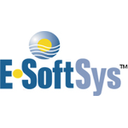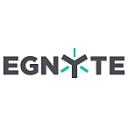Cloud Storage software: purchase guide
Cloud Storage Software in 2025: The Smart, Scalable Way to Secure Your Data
What Is Cloud Storage Software?
Cloud storage software enables individuals and businesses to store, manage, and access data online, without being tethered to physical storage devices or on-premise servers. At its core, cloud storage replaces traditional hard drives and file cabinets with secure, remote, and accessible systems that live in the cloud.
But it’s not just about dumping files into a digital box. Today’s cloud storage platforms are intelligent ecosystems designed for collaboration, data governance, automation, and security. They offer tools for syncing files across devices, sharing them with team members in real-time, tracking changes, integrating with business systems, and even automating retention or compliance workflows.
For startups, freelancers, enterprises, and everything in between, cloud storage software is now the operational backbone for a flexible, mobile, and secure way of working. In 2025, it’s as much about how you use your files as where they live.
Why Cloud Storage Matters More Than Ever
The business landscape has changed drastically in the past five years. Hybrid and remote workforces are the norm, cybersecurity risks are more frequent and more damaging, and regulatory compliance has become a non-negotiable part of running any organization that deals with customer data.
Cloud storage software is no longer optional—it’s mission-critical. Here's why:
Teams Are No Longer Tied to Offices
Whether your employees are working from home, on-site with clients, or halfway around the world, they need reliable access to documents and assets. Cloud storage software enables real-time file access, editing, and sharing from any device, making “work from anywhere” truly seamless.
Cybersecurity Demands a New Approach
Local storage is vulnerable. One lost laptop, one unpatched server, or one weak password can open the door to devastating data breaches. Cloud storage services provide enterprise-grade encryption, activity tracking, role-based access controls, and frequent security audits—raising the bar for data protection.
Collaboration Is Constant
Gone are the days of emailing files back and forth and dealing with conflicting versions. Cloud storage platforms provide live collaboration features: co-editing documents, sharing controlled links, tracking changes, and integrating directly with tools like Slack, Microsoft 365, and Google Workspace.
Storage Needs Are Exploding
From high-resolution media files to massive data logs, storage demands are only growing. Cloud platforms scale effortlessly—no hardware upgrades required. You can add capacity on demand, paying only for what you need, and expanding instantly as your business grows.
Regulatory Compliance Isn’t Optional
From GDPR to HIPAA to SOC 2, businesses are expected to protect, manage, and retain customer data responsibly. Cloud storage software offers built-in audit trails, policy-based access control, and document lifecycle management features that support these legal requirements out of the box.
Business Continuity Relies on the Cloud
Disaster recovery isn't just for earthquakes and floods. Cyberattacks, accidental deletions, and system failures happen every day. Cloud storage ensures that your data is backed up, replicated, and restorable quickly—so operations don’t come to a halt.
In short, cloud storage today is more than a utility—it’s an enabler of secure, efficient, and modern business.
How to Choose the Right Cloud Storage Software
Selecting a cloud storage solution is a strategic decision that impacts every department of your organization. The right platform not only keeps your files safe, but actively enhances how your team works, shares, and scales.
Here’s how to assess your options:
1. Start with Your Use Case
Are you mainly storing documents and presentations, or managing large video and media files? Are you focused on internal access, or do you share files externally with clients and partners? Understanding what you’re storing and how you’ll use it will help determine your priorities.
2. Evaluate Scalability
A solution that works well for a five-person team may struggle when you reach fifty or five hundred. Look for platforms that can scale effortlessly as your data and workforce grow—without requiring migrations or costly infrastructure changes.
3. Prioritize Security Features
Security should be front and center. Look for end-to-end encryption, activity logs, permission-based access, MFA (multi-factor authentication), and compliance certifications. Also consider features like geo-redundancy and ransomware protection.
4. Test the User Experience
Your team will interact with this software daily. It should be intuitive, responsive, and accessible across devices. A steep learning curve or clunky interface can lower productivity and increase IT tickets.
5. Examine Collaboration and Integration Options
Do you need real-time collaboration? Do you use Google Workspace, Microsoft 365, or a CRM like Salesforce? The best platforms integrate seamlessly into your existing workflows and reduce context-switching.
6. Understand the Pricing Structure
Pricing varies widely. Some providers charge per user, others per storage unit, and others bundle storage into broader software packages. Make sure you’re comparing total value—not just base prices—and look at long-term flexibility.
7. Look for Automation and Governance Tools
Features like automatic versioning, retention rules, activity alerts, and automated archiving can save time and reduce compliance risk. These aren’t luxuries—they’re essential for scaling your data operations.
Top Cloud Storage Software in 2025
Here’s a detailed comparison of standout cloud storage platforms, based on core features, pricing, and typical use cases:
| Software |
Key Features |
Pricing |
Trial & Demo |
Best For |
| Axonaut |
All-in-one business suite with CRM, invoicing, automation, and secure document storage in the cloud |
From €41.99/month |
Free version
Free trial
Free demo |
Small businesses seeking an integrated business management system with built-in storage |
| Sharecan |
Simple file sharing, collaborative editing, secure cloud-based document management with team-level access control |
Pricing on request |
Free version
Free trial
Free demo |
Teams that need easy document sharing with lightweight setup and strong permissions |
| Self Storage Management System |
Cloud-based platform for inventory tracking, automated billing, and facility access for self-storage companies |
Pricing on request |
Free version
Free trial
Free demo |
Storage businesses looking for centralized control over physical units and customer records |
| Self Storage Manager |
Manage reservations, customer data, and payments through a robust cloud portal tailored for the self-storage industry |
Pricing on request |
Free version
Free trial
Free demo |
Facility operators that require an all-in-one tool with cloud storage and billing |
| SiteLink Web Edition |
Secure, web-based storage management software with custom settings, access logs, and multi-site scalability |
Pricing on request |
Free version
Free trial
Free demo |
Multi-location storage operators who need flexible, secure, cloud-based access to facility and customer data |
Cloud Storage Trends to Watch in 2025
Cloud storage is evolving rapidly. In 2025, several trends are transforming how businesses store, access, and secure their data:
1. AI-Powered Search and Smart Tagging
Modern platforms are using artificial intelligence to auto-tag files, suggest folder structures, and enable search by content, context, or voice commands. No more digging through folders—just type what you’re looking for and find it instantly.
2. Hybrid Cloud Flexibility
More companies are combining public cloud storage with private, on-premise infrastructure. Hybrid models offer flexibility for sensitive data and compliance-heavy industries without sacrificing speed or access.
3. Built-in Compliance Engines
Platforms now include automated tools for meeting regulatory requirements. Expect customizable data retention policies, access logs, and real-time alerts for risky behavior or noncompliant activity—all embedded in the storage layer.
4. Decentralized and Edge Storage
As edge computing grows, some providers are enabling decentralized storage closer to the data source. This reduces latency and supports real-time processing for IoT, retail, and fieldwork scenarios.
5. Carbon-Neutral and Green Storage Providers
Sustainability is influencing buying decisions. Expect more providers to tout energy-efficient data centers, renewable-powered servers, and carbon offset programs as standard features.
6. Blockchain Verification for Document Integrity
In sectors like legal, healthcare, and finance, document authenticity is paramount. Blockchain is being used to verify timestamps, track changes, and prevent tampering—making cloud storage even more trustworthy.
7. Storage as a Productivity Hub
Cloud storage is being deeply integrated into wider productivity ecosystems. It’s no longer just about storing files—it’s about collaborating, managing workflows, and automating tasks from one central place.
Conclusion: The Future of Work Runs on Cloud Storage
In today’s digital-first world, your ability to store, access, and protect information isn’t a side concern—it’s foundational to everything your business does.
Cloud storage software isn’t just a more convenient way to manage files. It’s a platform for collaboration, security, compliance, and scalability. It empowers teams to move faster, leaders to make smarter decisions, and businesses to adapt to change without missing a beat.
As your business grows, your storage needs will only increase. The question isn’t whether to move to the cloud—it’s how fast you can get there with the right partner.
Because in 2025, data doesn’t just power your business.
It defines it.


















